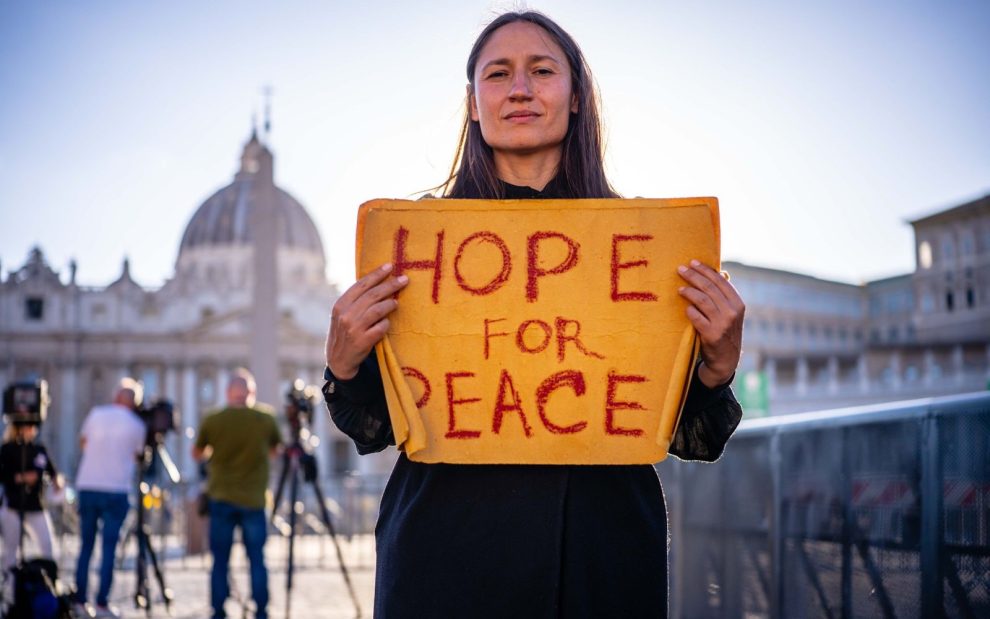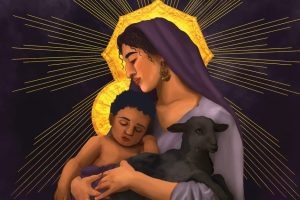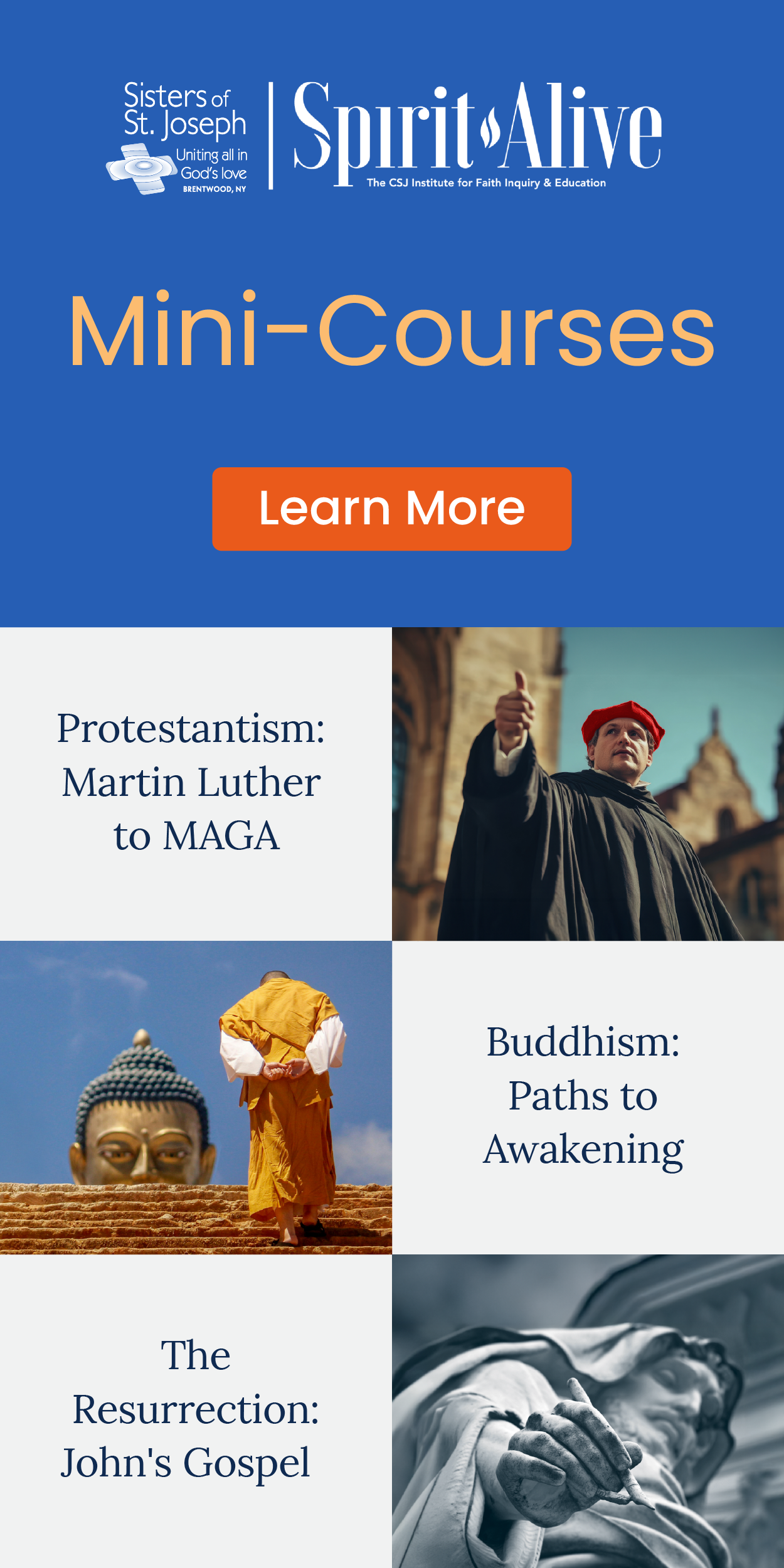From his first address on the balcony of St. Peter’s Square on Thursday evening, Pope Leo XIV has been introducing his theological style to his 1.4 billion-strong flock through his first homilies and messages.
Already, in his fifth day as pope, he has given six homilies and published speeches. In this introduction to the world, Leo XIV has reflected on the new synodal moment, shared some of his theological style, and revealed the fruits of his Augustinian formation with the world.
Augustinian charism
The Rule of St. Augustine, which the worldwide order follows, was written around the year 400 C.E., making it one of the oldest monastic rules still in existence. “Before all else, dear brothers, love God and then your neighbor, because these are the chief commandments given to us,” the Rule of St. Augustine begins. It commands the roughly 2,800 Augustinians who follow its rule to “live harmoniously together in oneness of heart and mind.”
Charism comes from the Greek word meaning “gift” and refers to a “spiritual gift” that a person or religious community brings to the church. The Apostle Paul describes different “charisms” or gifts from the Holy Spirit in the 12th chapter of his first letter to the Corinthians.
Community is a key component of the Augustinian charism. “Community is the axis around which Augustinian religious life turns,” according to the website of the Augustinians of the Province of St. Thomas of Villanova, who founded Villanova University in 1842. “Community is essential to Augustinians,” Society of the Sacred Heart of Jesus Sister Maria Cimperman, founder of the Center for the Study of Consecrated Life at Chicago Theological Union, says.
In his first words to the world as pope, Leo XIV has emphasized peace, the risen Christ, dialogue, and synodality. These themes are summarized eloquently in his papal motto: “In Ilo Uno Unum” (“In the One we are one”). The motto comes from Augustine’s sermon on Psalm 127: “When I speak of Christians in the plural, I understand one in the One Christ,” Augustine wrote. “You are therefore many, and you are one; we are many, and we are one.”
This concern for the mystical body of Christ and a harmonious, communal unity within a diversity is the foundation from which the themes of Pope Leo XIV’s preaching thus far have arisen.
The first word: Peace
“Peace be with you all!” Pope Leo XIV’s first words on the balcony of St. Peter’s Basilica were the same words with which Jesus greets the scared disciples in the upper room in the Gospel of John (20:19).
The new pope has referenced John’s gospel three more times: Once in his homily at his first Mass on Friday, and three more times in his meeting with the cardinals on Saturday.
In this meeting, he repeated the greeting again—“Peace be with you!”—and expounded on what exactly he meant by peace. “This is the peace of the Risen Christ, a disarmed peace,” the 69-year-old pontiff said. “A disarming, humble and persevering peace. It comes from God, God who loves us all unconditionally.”
His message of peace was well-chosen. Many commentators were struck by his repetition of peace.
One of them was Cimperman, who says she was overjoyed when the man she first met as Augustinian Father Bob Prevost began to speak.
“One of my first thoughts was, ‘Once again, we’re bending the arc toward love and justice,’ ” she says.
“Evil will not prevail!” Pope Leo XIV proclaimed in his first message. A few days later, speaking again in the balcony in St. Peter’s Square for his first Regina Caeli blessing, he declared “Never again war!” He singled out the wars in Gaza and Ukraine and the need for permanent, lasting ceasefire in both those conflicts as well as between India and Pakistan.
Pope Leo XIV’s emphasis on peace continued the message the College of Cardinals issued on Monday before they entered the conclave, which urged for peace in the Ukraine and Gaza. “We make a heartfelt appeal to all parties involved to reach a permanent ceasefire as soon as possible and to negotiate, without preconditions or further delay, the peace long desired by the populations involved and by the entire world,” they wrote. “We invite all the faithful to intensify their prayers to the Lord for a just and lasting peace.”
Cimperman notes that the 133 cardinals present at the conclave were remarkably diverse and many come from war-torn countries. One example she cites is Cardinal Charles Maung Bo, the Cardinal Archbishop of Yangon, Myanmar. Myanmar has been in a civil war since 2021, and many minority religious and ethnic groups—like the Zomi, who have a Christian majority—have been persecuted in Myanmar for decades.
“He is keenly aware of where we are,” Cimperman says. “These are places where it’s not easy to preach the gospel.” Pope Leo XIV responded into these war-torn contexts of this diverse gathering of cardinals with the message of peace.
“We are all in God’s hands,” the pope said. “Therefore, without fear, united hand-in-hand with God and among ourselves, we move forward.”
Easter people
The timing of Pope Francis’ death on Easter Monday, April 21, and the subsequent conclave seems to have struck Pope Leo XIV with a particular meaning. After bestowing the peace of the risen Christ, Leo XIV referenced Pope Francis’ appearance on that very balcony on Easter Sunday morning. “Allow me to follow up on that same blessing,” he said. “God loves you.”
In his address to the cardinals two days later, he referenced Francis’ death and Easter again. “At this moment, both sad and joyful, providentially bathed in the light of Easter, I would like
all of us to see the passing of our beloved Holy Father Pope Francis and the conclave as a paschal event,” he said.
Christ’s appearances after Easter in the Gospel of John coincide with an outpouring of the Holy Spirit. Pope Leo XIV referenced John’s 14th chapter, part of the “farewell discourses,” in which Christ promises the Holy Spirit will descend after he has departed (14:25–27).
In his homily, Leo XIV talked about the post-resurrection appearance of Christ. “It is the risen Lord, present among us, who protects and guides the church and continues to
fill her with hope through the love poured into our hearts through the Holy Spirit who has been given to us,” he said.
Cimperman notes that he was not only preaching Easter peace, but Easter joy. “I invite you to recognize the marvels that the Lord has done, the blessings that the Lord continues to pour out on us,” Leo XIV said in English before launching into his Italian homily at his first Mass.
“He’s been selected in the Easter Season,” Cimperman says, noting the resurrected Christ appeared with the wounds of his crucifixion still on his body. “That’s a powerful image for Christians,” she says. Like Jesus, “Pope Leo is not ignoring the suffering. He’s touching suffering and he’s using love.”
Sources of renewal
In his homily on Sunday, in the grotto of the tombs of the popes in crypt of St. Peter’s Basilica, Pope Leo emphasized the importance for priests to live the “joy of the gospel” in order to renew vocations. It was not the first time he had used this phrase.
“I would like us to renew together today our complete commitment to the path that the universal church has now followed for decades in the wake of the Second Vatican Council,” he said in his address to the cardinals.
Leo referenced Pope Francis’ first document, the apostolic exhortation Evangelii Gaudium (On the Proclamation of the Gospel), which he called a masterful concrete plan of how the church can live that universal renewal of the council.
He highlighted the key points in the document that Francis articled as the path to renewal: the primacy of proclaiming Christ, the importance of each person in the Christian community embracing the call to be missionary disciples of that good news, becoming a more synodal and collegial church, attentiveness to the sensus fidei, preferential option for the marginalized and poor, and dialogue with the signs of the times in the contemporary world, citing Gaudium et Spes (On the Church in the Modern World), the landmark closing document of the Second Vatican Council.
Leo XIV also cited Gaudium et Spes and Lumen Gentium (On the Church) in his homily at his first Mass.
These sources indicate a deep understanding of Vatican II’s renewal. In his first few speeches, Leo has referenced several early churchtheologians: St.Ignatius of Antioch, St. Augustine, and St. Gregory of the Great.
“I make reference especially to the time of the fathers of the church, because of an Augustinian perspective,” then-Father Robert Prevost said in a 2012 interview with Catholic News Service. He spoke about the challenges facing evangelization in a new media age at the Synod of Bishops in October 2012. He recommended studying the early church theologians to discover how to respond to this new moment. “Their evangelizing was successful in great part because they understood the foundations of social communication appropriate to the world in which they lived,” he said.
But it was not just his Augustinian charism that informed this insight, he said: It was the charism of Vatican II. “I think also a rediscovery that the church has made since the time of the council with respect to the value that the study of the fathers of the church has,” he said.
Ressourcement was a movement of 20th-century theology that led to the Second Vatican Council. Ressourcement was fueled by a desire to find renewal in the church and a guide to the church in the modern world by getting back to the roots of faith.
“Every new step in the life of the church is a return to the source,” states “For a Synodal Church: Communion, Participation, Mission,” the final document of the synod.
Pope Leo XIV has engaged in a kind of ressourcement even in his choice of name, inviting the universal church to revisit the roots of Catholic social teaching during a critical new moment.
In his address to the cardinals on Saturday, the pope said the first reason he chose his name was because “Pope Leo XIII in his historic encyclical Rerum Novarum addressed the social question in the context of the first great Industrial Revolution.”
Today, Leo XIV said, the church faces “another industrial revolution.” Thus, the church can offer the “treasury of her social teaching” to societies seeking to address “developments in the field of artificial intelligence that pose new challenges for the defense of human dignity, justice, and labor.”
“This square with open arms”: An ecclesiology of discipleship
In addressing the church gathered in Rome, Pope Leo XIV invoked the architecture of St. Peter’s Square, calling his flock to be a “missionary church, a church that builds bridges, dialogue, always open to receiving like this square, with open arms.”
To Cimperman, this image of the square’s colonnades as part of an embrace reminds her of Francis’ frequently invoked invitation to the synodal way: “Todos, todos, todos.”
Since 2022, Sr. Cimperman, who is a professor of theological ethics and consecrated life at Chicago Theological Union, has also served as the synodality coordinator for the International Union of Superiors General (USIG) in Rome.
She served as an expert theologian and facilitator during the 2023 and 2024 synod assemblies. And listening, she emphasizes, was one of the most important aspects of the experience.
“One of the things that I experienced at the synod was the ability to be honest with one another,” she says. She emphasizes the formative experience of listening with unity in the midst of disagreements. Pope Leo XIV has emphasized the need to listen in more than half of the public statements he has made thus far.
In his first Urbi et Orbi address, Pope Leo also called for “dialogue” three times and “walking together” twice.
“I know I can rely on each and every one of you to walk with me as we continue as a church, as a community of friends of Jesus, as believers, to announce the good news,” he said at his first Mass on Friday.
“When Pope Francis died, I thought we had lost our strongest voice for peace,” Yona Tukuser says. Tukuser, a 39-year-old artist from the Odessa region of Ukraine, has been holding a sign reading “Hope for Peace” in St. Peter’s Square since April 25.
She says she is moved when passersby read her sign and repeat the words, “hope for peace,” in a variety of different languages. “I realized it is a collective prayer,” she says.
She was excited when she heard Pope Leo XIV’s first words in St. Peter’s Square—“His first word was peace!” she says. Again, in his first Regina Caeli (noon Angelus) blessing on the loggia of St. Peter’s Basilica on Sunday afternoon, he called the violence in Ukraine, India-Pakistan, and Gaza a “third world war in pieces,” as Francis did. “Never again war!” he pleaded, emphatically.
His words moved Tukuser. But what has struck her even more has been his emphasis on dialogue and bridge-building. “Dialogue is the way to peace,” she says.
Dialogue has been a constant message of this papacy. “I think it is important that all of us learn more and more to listen, to enter into dialogue,” he said during his Sunday homily in the grotto of St. Peter’s Basilica. He mirrored what the final synod document named as the two-part structure of the synod: spiritual renewal and then structural reform. He emphasized that the first dialogue is with God.
“First of all with the Lord: always listen to the Word of God.” Then, from the vertical relationship, the horizontal: “Then also listen to others, know how to build bridges, know how to listen so as not to judge, not close doors thinking that we have the whole truth and no one else can tell us anything.”
Not only has Leo XIV preached on dialogue, he has practiced it. During his meeting with the cardinals on Friday, he offered a speech and then held a dialogue to consider “advice, suggestions, proposals” that had been raised in their meetings before and during the conclave. In his address to the cardinals, Pope Leo XIV thanked them for their support and expressed his confidence that he can depend upon them to assist him in his new ministry.
The encounter with Christ that all disciples are called to is the first call of the Christian, Leo XVI has emphasized throughout his first days. Leo XIV has emphasized his new call as bishop of Rome and shepherd of a universal flock is a call to serve.
“We are disciples in Christ,” Pope Leo XIV said after concluding his double blessing of peace in his first Urbi et Orbi address. “I am a son of St. Augustine, an Augustinian, who said: “With you I am a Christian and for you a bishop.’ ”
“Baptism is the key,” Cimperman says. The synod’s final document emphasizes the shared call to discipleship and walking together that comes from baptism. “Baptism is the framework, foundation through which we’re called to co-responsible discipleship and participation.” In this way, the synodal way’s emphasis on spiritual renewal and then structural reform mirrors the Augustinian rule, whose first command is, “Love God, and then your neighbor.”
“We want to be a synodal church, a church that walks, a church that always seeks peace, that always seeks charity, that always tries to be close especially to those who suffer,” Pope Leo XIV said during his very first speech in St. Peter’s Square.
During a moment of fractious division in the church and fragmented “third world war” around the globe, Pope Leo XVI is preaching unity in Christ—the harmonious community that Augustinians have embraced and worked for over more than 1,500 years.
Image: Courtesy of Renee Roden














Add comment